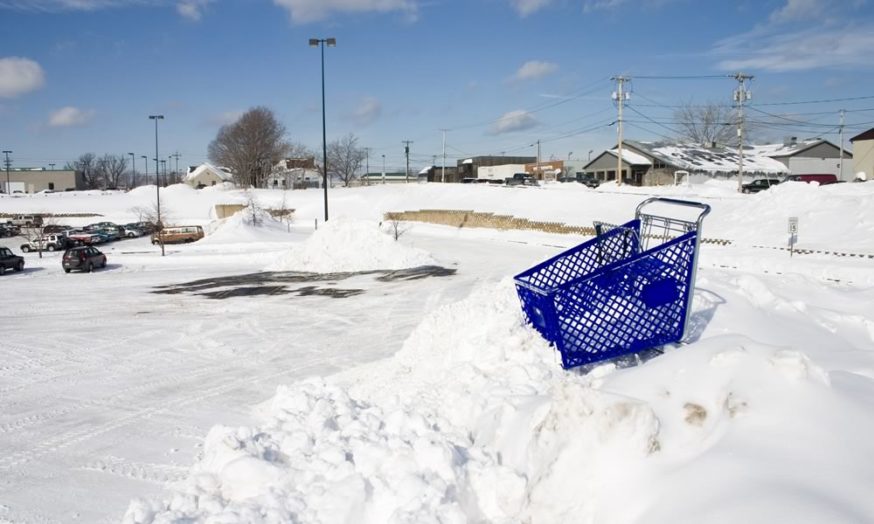Snow relocation services play a crucial role in the broader spectrum of snow removal strategies, particularly for commercial businesses and government facilities in ultra-cold climates with serious snow accumulation. While traditional snow plowing is effective in clearing roads and walkways, there are instances when the sheer volume of snow requires more than just displacement within the immediate area.
The snow removal process is not merely a series of routine activities; it is a comprehensive approach to effective snow and ice management. As the winter season unfolds, a continuous maintenance schedule is imperative to handle ice management and ensure the safety of roads and walkways, preventing the need for widespread shutdowns across regions like Washington, DC, Baltimore, Maryland, and Virginia.
What are Snow Relocation Services?
Snow relocation distinguishes itself from simple snow plowing by addressing the aftermath of plowing efforts. After a snow removal service clears roads, walkways, and industrial access points, a noticeable wall of snow may remain. This snow accumulation, though not an immediate hazard, poses long-term risks if left unattended. Unlike traditional plowing, snow relocation involves the physical removal of excess snow, either by hauling it away or, in some cases, melting it on-site using specialized equipment.
The snow relocation process is not a manual task involving shovels and pickup trucks; it employs heavy-duty tractors and trucks capable of efficiently lifting and transporting significant amounts of snow and debris away from roadways. This step is a critical component of professional snow and ice management, applicable to various clients, including government agencies and manufacturing companies.
The Dangers of Large Snow Piles
The necessity of snow relocation becomes apparent when considering the potential dangers associated with snow piles. Unattended snow piles can contribute to soil erosion, infrastructure damage, and reduced visibility, increasing the risk of accidents. Melting and refreezing cycles can wreak havoc on surfaces such as driveways and parking garages, causing cracks and erosion that may require extensive repairs once the snow has melted.
Additionally, snow piles may impede visibility for both pedestrians and drivers, posing a higher risk of accidents in parking lots, roads, and walkways. Snow relocation services also address the need for creating additional space in crowded parking lots or roads by relocating snow to designated off-site areas.
When engaging a snow removal service provider, it is essential to ensure that their services extend beyond mere snow plowing. A comprehensive approach, encompassing pre-season planning, a variety of equipment, and a skilled workforce, is vital for effective snow and ice management. The inclusion of snow relocation services in the service contract ensures a complete solution that not only clears snow but also mitigates potential hazards and liabilities.
What is done with “relocated” snow?
Snow contractors employ various methods to manage the snow removed from parking lots and other designated areas. The choice of what to do with the snow depends on factors such as the volume of snow, available space, environmental considerations, local regulations, and equipment available. Here are several options commonly used by snow contractors:
- Snow Relocation to a Different Property:
- Contractors may transport the snow to an off-site location, often referred to as a snow disposal site or snow farm. These locations are designated areas where accumulated snow can be safely stored until it naturally melts or is removed later.
- Melting Snow on Site:
- Some contractors use specialized snow-melting equipment that melts the snow on-site. These machines heat the snow, turning it into water, which is then channeled away as runoff. This method requires proper drainage to prevent the melted water from refreezing on surfaces.
- Hauling Snow Away:
- In situations where relocating the snow locally is not feasible, contractors may load the snow onto trucks and transport it to a designated dumping site or another location where it can be safely deposited. This is a common method when the volume of snow is substantial.
- Dumping Snow in Designated Areas:
- Contractors may have predetermined locations, such as empty lots or designated snow storage areas, where snow can be dumped and left to naturally melt over time. This method requires compliance with local regulations and environmental considerations.
- Snow Melt Pits:
- Some contractors utilize snow melt pits, which are specially designed areas where snow is piled and allowed to melt gradually. These pits typically have drainage systems to manage the melted water.
- Snow Blowers and Augers:
- Snow blowers and augers can be used to break down large snowbanks into smaller, more manageable piles. This can facilitate the natural melting process, especially in areas with adequate drainage.
- Snow Hauling to Remote Locations:
- In cases where local options are limited, contractors may transport snow to more remote locations where it can be safely deposited, adhering to environmental regulations and guidelines.
- Snow Recycling:
- In environmentally conscious regions, some contractors explore options for recycling snow. This may involve filtering out debris and pollutants before releasing the melted water into local water systems.
- Composting:
- In areas with proper infrastructure, snow with minimal contamination can be placed in designated areas for natural melting. The resulting water can then be used for irrigation or other non-potable purposes.
It’s important to note that the chosen method may vary based on local ordinances, environmental considerations, and the specific needs of the property owner or municipality. Additionally, snow contractors often employ a combination of these methods to effectively manage snow removal while minimizing environmental impact and maximizing safety.
Planning ahead is key to navigating the challenges of the winter season in the mid-Atlantic region. Timely contract agreements with experienced snow removal service providers, such as Rasevic, can guarantee access to the necessary equipment and workforce, preventing any disruptions caused by unexpected snowfall. Contact Rasevic today for inquiries or a free quote to ensure a seamless and secure winter season.
Request Quote
"*" indicates required fields

